April 2019
Honoring Yesterday – Protecting Tomorrow
Vol. 50, No. 4
April Calendar of Events
Mon., April 1
Cesar Chavez Day
RESDC and SDCERA Offices Closed
Thurs., April 11, 9:30am
RESDC Board of Directors Meeting
8825 Aero Drive, Suite 205
Sun., April 14, 4:00 – 6:00pm
RESDC Roundup Social Mixer
Stone Brewing in Liberty Station,
2816 Historic Decatur Rd., San Diego, 92106
Sun.-Weds., April 14 – 17
CRCEA Spring Conference
Hosted by RESDC, Doubletree Hotel Circle
Thurs., April 18, 9:00am
SDCERA Board of Retirement Meeting
2275 Rio Bonito Way, Suite 200
![]() View the NETWORK
View the NETWORK
as a printable PDF
Are you on social media?
Stay connected with us!![]()
![]()
![]()
Quote of the Month
“Don’t judge each day by the harvest you reap but by the seeds that you plant.”
▪ Robert Louis Stevenson
President’s Message
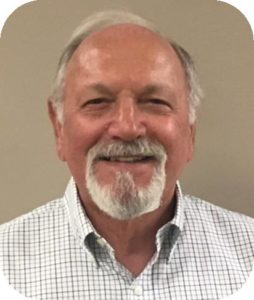
By John J. McTighe
Last month the California Supreme Court refused efforts by some to reverse long-standing precedent known as the “California Rule” which acknowledges that government pensions are an employer’s contractual obligation from the day an employee begins work. This is good news for public employees in California! The highest court in our state has not caved in to the unreasonable calls by some to begin to dismantle defined benefit retirement.
In CAL FIRE Local 2881 v California Public Employees’ Retirement System (CalPERS), the Court ruled that “air time” purchases which had been allowed for members of CALPERS were not protected by the California Rule, but that the basic retirement benefits earned by employees during their service were protected. In fact, in a concurring opinion by Justice Leondra R. Kruger, it was stated “An implied contractual promise protecting this type of pension right arises because neither party could reasonably understand a deferred compensation (e.g. pension) offer to be revocable at will after employment.” She went on to say, “No reasonable employee would agree to defer significant portions of his or her compensation without a vesting guarantee, and no reasonable employer would imagine that employees had agreed to work on such terms.”
RESDC will continue to follow other cases that are challenging the California Rule and, through our affiliation with other 1937 Act counties in the California Retired County Employees Association (CRCEA), will take appropriate actions to make the collective voices of county retirees heard.
In my last column, I wrote a little about the history of the jewel of San Diego, Balboa Park. This month, I will share some of the activities that take place in Balboa Park that you might be interested in taking advantage of. If you aren’t very familiar with Balboa Park and all that it has to offer, a good way to find out more is to visit the Balboa Park Visitor Center located in the House of Hospitality Building. If you go on Tuesday at 11:00 am, you can take a free walking tour of the park led by a volunteer from the Visitor Center.
If you are into free, and who isn’t these days, Balboa Park’s museums offer “Residents Free Days” on the first four Tuesdays of each month to residents of the City and County of San Diego. These free days rotate among the 16 museums. In some cases, the museums may offer complimentary admission to their permanent collections only and charge admission to special exhibitions, attractions, films, showings and events. For a list of which museums are on which day, consult the website: www.balboapark.org/residents-free. Also free any time is the lovely Botanical Building and the organ concerts held every Sunday afternoon at 2:00 pm at the picturesque Organ Pavilion. And, of course, it’s always free to just walk around the park and enjoy both the natural beauty and architectural character of the park.
If you’d like to visit the museums at any time, Balboa Park offers an annual Explorer Pass which gives you access to all 16 museums for an entire 12-month period. The participating museums are: Centro Cultural de la Raza, Japanese Friendship Garden, Mingei International Museum, Museum of Photographic Arts, Fleet Science Center, San Diego Air and Space Museum, San Diego Art Institute, San Diego Automotive Museum, San Diego History Center, San Diego Model Railroad Museum (one of my favorites!), San Diego Museum of Art, San Diego Museum of Man, TheNat (San Diego Natural History Museum), Timken Museum of Art (currently closed for remodeling), Veterans Museum and Memorial Center, and WorldBeat Center. The annual Explorer Pass currently costs $129 for adults (age 13-64), $99 for seniors (age 65+) and $229 for a family (two adults and two kids). There are also Explorer Passes good for one day or one week for $48 to $59 for adults (age 13+) and $29 to $32 for children (age 3-12). If you plan to visit only one or two museums, be sure to check their websites ahead of time for pricing and special discounts/programs available for seniors. For instance, when my wife and I visited the Fleet Science Center in February, we took advantage of their “Senior Monday” special which gave us admission to the entire center, a special lecture and showing of an iMax movie for just $8.00 a piece which was well below the normal $19.95 senior admission price.
I’m looking forward to the upcoming California Retired County Employees Association (CRCEA) conference that RESDC is hosting here in San Diego later this month. I hope some of you will be able to join us for our Roundup event held on the eve of the conference at Stone Brewing Company at Liberty Station from 4:00-6:00 pm on Sunday, April 14th. (You can read more about this on page 6). This will be an opportunity for you to mix and mingle with county retirees from other counties throughout California as well as some of your fellow San Diego County retirees. I’m pleased we have been able to arrange discounts to the Monday, April 15th Padres game against the Colorado Rockies and for Old Town Trolley Tours that are extended to you, our members. Click here for details on these discounts. ◾
The Concentration of Wealth
By Stan Coombs
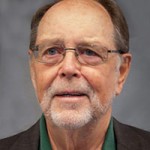 The net worth of U.S. households and non-profits was $94.7 trillion in the first quarter of 2017, according to the Federal Reserve Bank of St. Louis. If shared equally among the 124 million U.S. households, it would mean $760,000 per family. Wealth, in this context, includes homes, automobiles, personal valuables, businesses, savings and investments, minus debts.
The net worth of U.S. households and non-profits was $94.7 trillion in the first quarter of 2017, according to the Federal Reserve Bank of St. Louis. If shared equally among the 124 million U.S. households, it would mean $760,000 per family. Wealth, in this context, includes homes, automobiles, personal valuables, businesses, savings and investments, minus debts.
But of course, wealth isn’t equally shared. The bottom 50% of U.S. families (62 million households) average only $11,000 in holdings, according to Janet Yellen, former Chair of the Federal Reserve, while the wealthiest 1% possesses 40% of the nation’s wealth. Some reports indicate the 1% holds over 90% of the wealth. That concentration isn’t common. Credit Suisse’s 2018 Global Wealth Databook reports the U.S. concentration of wealth to be more than in all but 11 other countries.
Oxfam International, a long-time non-profit focused on alleviating poverty, estimates that the richest 85 people worldwide own as much as the entire poorer half of the population, and Britain’s The Guardian reports the richest 1% becoming wealthier by 6% a year – twice the 3% growth rate enjoyed by the remaining 99% and on course to control two-thirds of the world’s wealth by 2030.
In fact, in 2010, the first recovery year after the Great Recession, 93% of U.S. income gains (in contrast to held wealth) went to the top 1% of the population, and the average pay of CEO’s in the 350 largest American firms surged to $18.9 million in 2017, 312 times the pay of the average factory worker. The CEO-to-factory worker ratio was “30 times” in 1978.
The top half of the top 1% (.05%) has far more than folks in the bottom half of the top 1%, and both wealth and income are super-concentrated in the top .01%, or one out of every thousand people. Economist G. William Domhoff describes the one-percenters, as having at least $18.6 million in wealth and $1.7 million in income in 2017, compared to -$10,000 in wealth and $20,000 in income for the bottom 40%.
An anonymous investment manager (who doesn’t wish to jeopardize business relationships) describes his very high-end .01% clients in An Investment Manager’s View on the Top 1%, as having entry level holdings at the $24.4 million level. Those in the lower half of the top 1% live well on after-tax incomes of $175,000 to $250,000, he says, but don’t have “access to the true corridors of power and money.” They “are essentially well-compensated workhorses for the top .5%.”
Our anonymous author also describes the advantages available to the top .5%. They can borrow for little, keep products and profits overseas, hold assets in tax havens, ride out markets and economies, and influence public policy in their direction. They have access to the best in accounting firms, tax and other attorneys and consultants, private wealth managers, wealthy and powerful friends, and lucrative business opportunities, while those in the bottom half of the top 1% lack the same power and global flexibility. “The odds of getting into that top .5% are very slim,” he opines.
So, why is all this a societal problem? Isn’t the United States the land of opportunity, and financial gain to be admired as a measure of hard work and deserved success? Not all economists see it that way.
One would think such extreme concentrations of wealth and power impact opportunities for the remaining 99%. At least one study finds there is less opportunity in today’s America than in class-conscious Europe.
Extreme concentrations of wealth may be evidence of financial success, but it also means the economic tide isn’t raising all boats. Extremes in wealth and standards of living contributed to the destabilization of many societies, by leaving those at the bottom convinced they were marginalized or disenfranchised. That’s been a classic problem, and the U.S. is now reported to have a Gini coefficient (a standard measure of inequality) approaching that of some dysfunctional third world countries.
A 2014 study by the International Monetary Fund found that more equitable societies tend to enjoy faster and more durable growth, and there’s little evidence that policies that redistribute wealth have negative impacts.
And there’s that difficult term, “distribution of wealth,” again. What is that? Distribution of wealth is exactly what it sounds like, policies that move portions of concentrated wealth back into the mainstream population. Tools to accomplish that can include increasingly progressive tax schedules, estate taxes, taxation of offshore profits, wealth taxes, vouchers, subsidies, land reform and negative income tax arrangements.
And, unlikely as it sounds, the wealthy sometimes give their assets away. In 2010, Warren Buffett decided to give 99% of his $70 billion fortune to philanthropy and invited wealthy colleagues to join him in a “Giving Pledge,” to gift more than half their wealth to philanthropic or charitable causes. To date, 190 philanthropists from 22 countries have signed up.
Just when we were becoming cynical about the relationship between wealth and power. . . . (!) ◾
Pension Facts
Other States Face Severe Public Pension Shortfalls
Pension Facts at a Glance
118
RESDC members who have opted into the Member Directory. The Directory is only visible to logged-in members, and you choose what information to share. On the RESDC website www.resdc.net click on “Member Login.”
By Chris Heiserman, Director
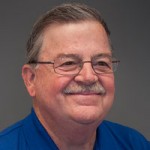 Even though we see a regular chorus of alarms sounded by the media over the long-term health of California’s public retirement plans, there are other states facing much more immediate and massive pension funding challenges.
Even though we see a regular chorus of alarms sounded by the media over the long-term health of California’s public retirement plans, there are other states facing much more immediate and massive pension funding challenges.
A recent commentary published in Bloomberg News highlighted the huge public pension crises that three newly elected governors face in Connecticut, Illinois, and New Jersey. Each of these states has chronically underfunded retirement plans with less than 50% of the assets necessary to satisfy future benefit liabilities. They all have bond ratings from the top credit rating agencies below double-A and must pay significantly more than other states to borrow money.
Governor Philip Murphy in New Jersey, J.B. Pritzker in Illinois, and Ned Lamont in Connecticut inherited dire fiscal dilemmas, topped in each case by very large unfunded pension liabilities. Illinois’ public retirement funds have $134 billion in unfunded liabilities. Connecticut is $35.5 billion short of covering its future pension obligations. New Jersey’s unfunded pension benefit deficit is approximately $143 billion. The meager funding ratios for these state retirement systems are: Illinois 38%; New Jersey 36%; and Connecticut 44%.
(By way of comparison, the California Public Employees Retirement System, the nation’s largest, has $157 billion in unfunded liabilities but a funded ratio of 68%).
In a commentary for “Money Watch”, Alicia Munnel, Director of the Center for Retirement Research at Boston College, stated that the long-term pension underfunding in Connecticut, Illinois, and New Jersey is so severe that only some sort of “grand bargain” and drastic measures will resolve their pension problems.
Illinois’ Governor Pritzker has tried to address his state’s financial distress in his first budget proposal but Standard and Poors Global Ratings agency has criticized his plan as lacking meaningful pension reform. Pritzker’s budget approach would involve raising taxes, adding seven years to the retirement fund contribution pay off schedule (extending it from 2045 to 2052), and issuing $2 billion in bonded debt to supplement the state’s current year payment to the pension plans. Since Illinois already has one of the worst credit ratings in the country, it will pay a premium to borrow the money and risks a further deterioration of its credit standing if its financial woes continue.
Critics of Pritzker’s budget plan say he is repeating the mistake that led to the funding crisis – passing difficult budget decisions on to future administrations. Adding seven years to the payment schedule would reduce short-term costs, thus limiting the monies in the pension fund available for investment to fulfill future benefit obligations, and those investment dollars lost will have to be put in by taxpayers years later. It’s another example of “balancing” this year’s budget by “kicking the can down the road.”
Connecticut is considering a budget plan that would shift one-fourth of its teachers’ pension costs to cities. Governor Lamont has proposed a two-year budget that calls for cities and towns to pick up $73 million of retirement costs for current teachers over the next two years. He suggests giving the state 30 years instead of 12 years to pay down its $14 billion debt to the teachers’ pension fund. He said if the fund isn’t restructured in this way, the anticipated annual payments could increase by as much as $2 billion.
In New Jersey, Governor Murphy similarly tried to put a more fiscally responsible foot forward, setting aside the state’s biggest pension payment ever ($3.2 billion) in his 2018 budget. Still the unfunded pension deficits of all three states are mind-boggling and outside observers agree they may be facing their last opportunity to begin getting their retirement funds back on track.
Nevertheless, as is always the case, meaningful progress will require that legislatures embrace and implement plans proposed by the governors, and that the ideas work out as envisioned. Predictably, the initial reaction from local elected officials in Connecticut to assuming a share of teachers’ pension costs was negative. ◾
All-In April with RESDC!
By Chuck Brown, Membership Committee Chair
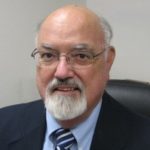 March is a popular month for retirement, as we welcome new members who “got out the door” in time to collect the April COLA. We know retiring can be a challenging transition and perhaps learning about and then joining RESDC wasn’t on that all-important “to do” list. One of the best sources of information can be other retirees, especially RESDC members. The RESDC calendar is full of opportunities to attend events and socialize with other retirees and learn more about RESDC.
March is a popular month for retirement, as we welcome new members who “got out the door” in time to collect the April COLA. We know retiring can be a challenging transition and perhaps learning about and then joining RESDC wasn’t on that all-important “to do” list. One of the best sources of information can be other retirees, especially RESDC members. The RESDC calendar is full of opportunities to attend events and socialize with other retirees and learn more about RESDC.
 To refresh your memory about these events, or provide friends with details on all our events, visit our website: https://www.resdc.net/events/. In addition, RESDC encourages volunteerism with other organizations/events that might be of interest to our members. Some of these are the annual Alzheimer’s Walk, the Big Brothers and Sisters of San Diego “Operation Bigs”, and the AARP Foundation Experience Corps (reading tutors for K-3). These are listed on the Community Events page: https://www.resdc.net/community-events/.
To refresh your memory about these events, or provide friends with details on all our events, visit our website: https://www.resdc.net/events/. In addition, RESDC encourages volunteerism with other organizations/events that might be of interest to our members. Some of these are the annual Alzheimer’s Walk, the Big Brothers and Sisters of San Diego “Operation Bigs”, and the AARP Foundation Experience Corps (reading tutors for K-3). These are listed on the Community Events page: https://www.resdc.net/community-events/.
These events come in many flavors. The quarterly general membership meetings provide an opportunity to do a “deep dive” into a topic of interest to retirees. The annual Flag Day Luncheon, Health Fair Picnic, and Holiday Luncheon allow members and prospective members to spend more time socializing and often have an entertainment program. The RESDC Roundups, inaugurated last year, are designed as purely social functions at various eateries around the county.
Action: Invite a non-member to the Roundup on Sunday, April 14 from 4-6pm at Stone Brewing Liberty Station. (Click here for more information.)
Alternative Action: Out of town or can’t make it then? Plan your own coffee get-together with friends and be sure to mention RESDC. Share our membership webpage https://www.resdc.net/become-a-member/ with them or print out the RESDC membership enrollment form (on the member page) to give to your County retiree friends. ◾
Recent Events
- SDCERA COLA – At the February 21 SDCERA Board of Retirement meeting, the Board approved staff’s recommendation for a 3% Cost-of-Living Adjustment (COLA) for members in Tiers I, II, and A, and a 2% COLA for members in Tiers B, C, and D. Members with retirement dates on or before March 31, 2019 will have the COLAs applied to their monthly benefit effective with their April 2019 payment. More information about the SDCERA COLA can be found at: www.sdcera.org.
- New Research: Retirement Insecurity 2019: Americans’ Views of the Retirement Crisis. Americans are facing a retirement savings crisis. While experts have warned about this for a while now, do working families themselves recognize the growing crisis? The answer is overwhelmingly “yes” according to a new survey from the National Institute on Retirement Security. Released last week, the survey finds that Americans of all political persuasions—Democrats, Republicans, and Independents—acknowledge the difficulty in saving for retirement and wish the government would do more to help.
Three-fourths of Americans say the United States faces a retirement savings crisis. This includes 80 percent of Democrats, 75 percent of Republicans, and 75 percent of Independents. More than half of Americans support increasing contributions to Social Security as a way to strengthen retirement security. To access the research, visit: www.nirsonline.org/research/. ◾
 Save the Date!
Save the Date!
General Membership Meeting
When: Thursday, May 23, 2019
Time: Beverages and light refreshments will be available at 9:30 a.m.
Speakers will begin at 10:00 a.m.
Place: SDCERA Board Room
2275 Rio Bonito Way, #200, San Diego, 92108
Our program will include presentations from two great RESDC partners, Nationwide Retirement Solutions and My Senior Health Plan.
Cathie Purdon, a Personal Retirement Consultant with Nationwide will provide information related to the County of San Diego Deferred Compensation Program and as a retiree how to ensure you are on track in managing your plan.
Pete Blasi from My Senior Health Plan will highlight how they work exclusively with the Medicare-eligible population to ensure that retirees are not paying too much for health insurance premiums. My Senior Health Plan provides a FREE review of all your Medicare insurance options, including those available in San Diego County.
Presentation topics include:
- Know your Medicare options;
- County options versus the Independent Market can have vastly different premiums and copays;
- Consider your provider network before you switch.
RSVP requested but not required. Visit: www.resdc.net/events or call 619-688-9229. ◾
 Cesar Chavez Day
Cesar Chavez Day
Monday, April 1
Cesar Chavez Day is a State holiday in California and several other states. The day is commemorated to promote service to the community in honor of Cesar Chavez’s life and work. The holiday celebrates the March 31 birthday and the legacy of the civil rights and labor movement activist Cesar Chavez each year. This year the holiday is observed on Monday, April 1. The RESDC and SDCERA offices will be closed on Monday, April 1 in honor of Cesar Chavez Day. ◾
 RESDC Roundup Social Mixer
RESDC Roundup Social Mixer
Sunday, April 14 from 4:00—6:00 p.m.
Stone Brewing in Liberty Station
2816 Historic Decatur Rd, San Diego, 92106
Join us for a fun social event where you’ll get to meet and mingle with retirees from across the state, as well as members of the local association. This is a no-host event. Food and beverages are available for purchase from the restaurant. RSVP requested, but not required: https://www.resdc.net/events or call (619) 688-9229.
CRCEA Spring 2019 Conference
Hosted by RESDC
April 14 – 17, 2019
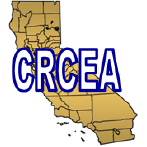 The Roundup is part of the CRCEA Spring 2019 Conference, which will be April 14 – 17, 2019 at the Doubletree Hotel Circle. California Retired County Employees Association (CRCEA) is a nonprofit coalition of 20 California retired county employee associations, including RESDC. CRCEA provides a forum for educating members and promoting retiree benefits and issues. To further that mission, leadership from these associations meet at semi-annual conferences. The conference is structured to review information relevant to legislation, the state of health care, senior safety, and other issues of importance to retirees. RESDC is proud to be the host of the CRCEA 2019 Spring Conference, which marks the 50th anniversary of CRCEA.
The Roundup is part of the CRCEA Spring 2019 Conference, which will be April 14 – 17, 2019 at the Doubletree Hotel Circle. California Retired County Employees Association (CRCEA) is a nonprofit coalition of 20 California retired county employee associations, including RESDC. CRCEA provides a forum for educating members and promoting retiree benefits and issues. To further that mission, leadership from these associations meet at semi-annual conferences. The conference is structured to review information relevant to legislation, the state of health care, senior safety, and other issues of importance to retirees. RESDC is proud to be the host of the CRCEA 2019 Spring Conference, which marks the 50th anniversary of CRCEA.
While the conference is attended by the leadership of the 20 CRCEA counties, we have secured several discounts on activities that are available to both CRCEA conference attendees and RESDC members.
Discounted Activities Available to All RESDC Members
The following discounts must be purchased online directly with the respective organizations.
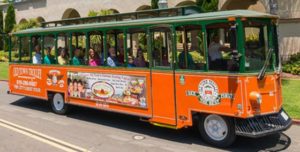 Old Town Trolley Tours
Old Town Trolley Tours
Enjoy a 20% discount off Old Town Trolley Tours, a fun sight-seeing activity! Use code RESDC2019 when purchasing online. Code is valid April 1st – 30th, 2019. Explore the city with a day pass for the hop-on hop-off narrated Tour of San Diego on open-air trolleys, with 10 stops at popular tourist destinations. Or check out the amphibious SEAL Tour to see San Diego by land and by sea. Discount only valid on these two tours, not any packages offered. For more info and to purchase, visit www.trustedtours.net/sdgroups.
 Padres vs. Rockies at Petco Park
Padres vs. Rockies at Petco Park
Enjoy discounted tickets to the Padres game on Monday, April 15 at 7:15pm. Visit www.padres.com/events, scroll down and locate Apr 15 – RESDC April Conference, then click on the green ticket icon. When it asks you to “login,” use pass code RESDC19. Select seats and complete purchase. For transportation and parking information, visit https://www.mlb.com/padres/ballpark/transportation/.
 American Premiere Musical Life After at The Old Globe
American Premiere Musical Life After at The Old Globe
Enjoy a 35% discount to select performances of Life After at The Old Globe in Balboa Park. Britta Johnson’s Life After is a bittersweet, witty, and life-affirming new musical that explores the mess and beauty of loss and love. Discount valid online only, while supplies last. We encourage you to purchase as soon as possible before it sells out. All ticketing service fees are waived. Sales end 2 hours prior to show. No refunds or exchanges. If the ticket price does not say “Group Web 35%” next to it, please do not continue with the transaction. Discounts will not be applied later, all sales are final. Visit the links below to receive the discount for Premium or Section A seating on:
- Saturday, April 13 at 8:00pm
https://www.theoldglobe.org/reserve/index.aspx?performanceNumber=15357&promo=7737 - Wednesday, April 17 at 7:00pm
https://www.theoldglobe.org/reserve/index.aspx?performanceNumber=15335&promo=7737 - Saturday, April 20 at 2:00pm
https://www.theoldglobe.org/reserve/index.aspx?performanceNumber=15349&promo=7737
For driving directions and general info, visit The Old Globe website at https://www.theoldglobe.org or call the Box Office at (619) 234-5623. For assistance ordering, contact the Group Sales Representative, Cristal Salow, directly at (619) 238-0043 x2408. ◾
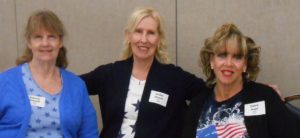 Save the Date!
Save the Date!
Flag Day / Independence Day Luncheon
Thursday, June 27, 2019 at 11:00am
We are pleased to invite you to our new joint celebration of two historic days in American history. In addition to our normal commemoration of the adoption of the flag of the United States, we will also be recognizing the day in which 13 colonies claimed their independence from England, an event which eventually led to the formation of the United States.
Join us on Thursday, June 27 for the Flag Day/Independence Day Luncheon at the Ronald Reagan Community Center in El Cajon.
Stay tuned to the May & June NETWORKs for more details on our program, entertainment, and lunch menu. ◾
 Members Share
Members Share
By Carol Grayson Reynolds,
Health And Human Services, Retired 2006
I saved a little in every paycheck for a trip to The Holy Land. I didn’t get to go right away when I retired, but when I did, it was the trip of my lifetime. Walking in the footsteps of Jesus was most profound. When I hit the lottery, I’ll have a place in Haifa. Haifa is a northern Israeli port city built in tiers extending from the Mediterranean up the north slope of Mount Carmel. This photo was taken at Petra in Jordan.
Carol retired from Health And Human Services/Maternal Child Health. She lives in Bristol, Virginia, home of the NASCAR Bristol Speedway.
Editor’s Note: If you have a favorite or unusual travel experience you would like to share, please send it via email to resdc@resdc.net or mail it to RESDC, 8825 Aero Dr., Suite 205, San Diego, CA 92123. You can also call the RESDC office with any questions at (619) 688-9229. ◾
 Free Smoke Alarms for Seniors!
Free Smoke Alarms for Seniors!
Smoke alarms save lives. National safety statistics show that adults age 65 and older are two times more likely to perish in a home fire than any other segment of the population. Local non-profit, The Burn Institute, wants to keep our seniors safe. If you are a homeowner over the age of 62, they will install free smoke alarms in your residence, that adhere to California safety code. These free smoke alarms are equipped with 10-year lithium batteries, that last the entire life of the alarm. Don’t get up on a ladder and risk falling—let trained professionals do it for you at no cost. Email: smokealarm@burninstitute.org or call 858-541-2277 to schedule your free smoke alarm installation today.
- Having a smoke alarm in your home reduces your risk of dying in a house fire by 50%.
- Adults age 65 and older are two times more likely to die in a home fire than any segment of the population and for those over age 75 that risk nearly triples.
- More than two-thirds of home fire deaths result from fires in homes without smoke alarms.
- Smoke alarms should be installed in every bedroom, outside each separate sleeping area, and on every level of the home, including the basement.
- Replace all smoke alarms when they are ten years old or sooner if they don’t respond properly.
- Test alarms monthly by pushing the test button.
Burn Institute Information:
The Burn Institute has been THE community resource for burn prevention education and burn survivor support for over 45 YEARS. The Burn Institute Senior Smoke Alarm Program works in collaboration with local fire departments to install FREE smoke alarms to seniors aged 62 and over who need them. They can be reached at 858-541-2277 for more information. ◾
Welcome New Members
Tracy S. Cline – Public Works
Ralph Desiena – Air Pollution Control
Kristin D. Gaspar* – Board of Supervisors
Suzanne J. Haynes-Pitts – Auditor/Controller
Linda D. Nadalet – Auditor/Controller
Jennifer M. Uebbing – Registrar of Voters
*Associate Member
The surviving Spouse of a member is eligible for RESDC membership. For enrollment assistance, please call: (866) 688-9229. ◾
NETWORK is the official monthly newsletter of the Retired Employees of San Diego County, Inc. (RESDC), a private non-profit organization.
The information printed in the NETWORK is believed to be from reliable sources. However, no responsibility is assumed by the NETWORK for inaccuracies contained herein.
Business and Inquiries: Business matters and address changes may be recorded on our voicemail at any time, call (866) 688-9229. Please spell your name so the correct member record can be located.
Retired Employees of San Diego County, Inc.
8825 Aero Drive, Suite 205 | San Diego, CA 92123
Office Hours: 9 a.m. to 2 p.m. Monday through Friday
TELEPHONE: (866) 688-9229 Toll Free
FAX: (619) 688-0766
E-MAIL: resdc@resdc.net

